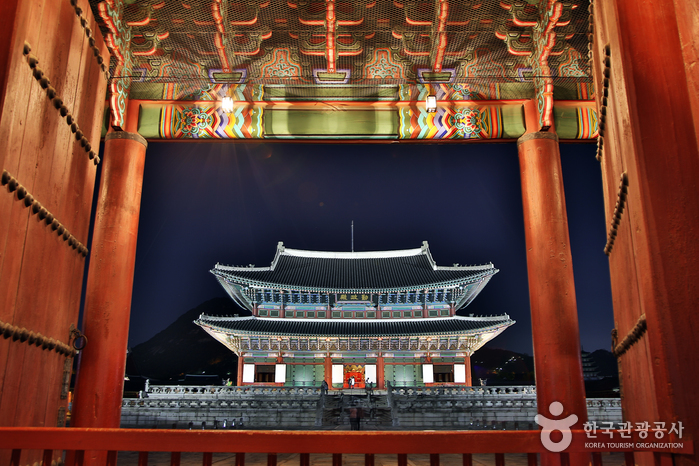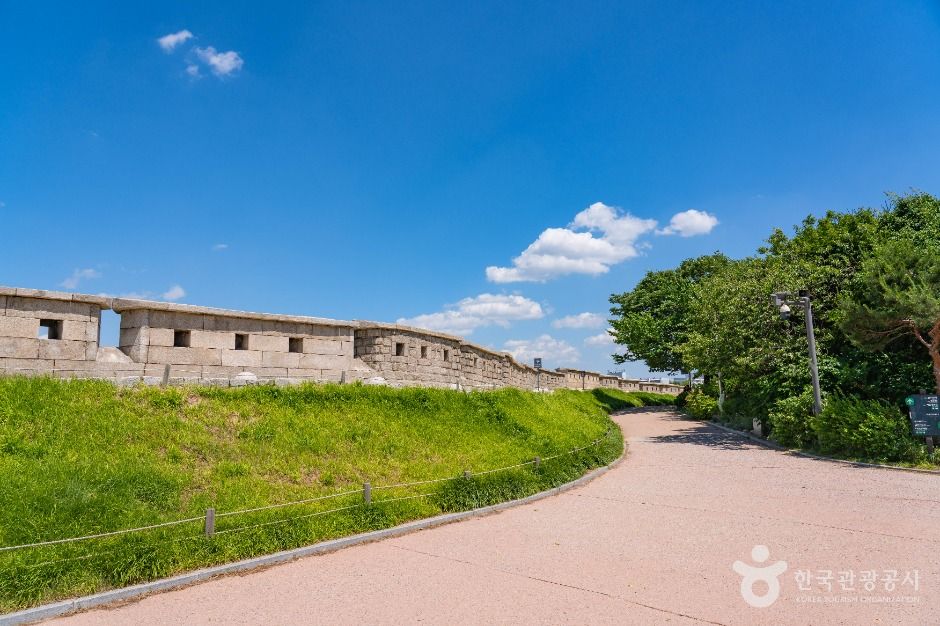Moggoji [Korea Quality]모꼬지[한국관광 품질인증]
655.5M 2023-08-31
13-6, Hyehwa-ro 16-gil, Jongno-gu, Seoul
+82-10-9389-2837
Moggoji is a hanok guesthouse in Hyehwa-dong, Daehak-ro, Jongno-gu, Seoul. Located just 10-minutes' walk from Hansung University Subway Station, it’s convenient for public transportation. There are four guestrooms, all equipped with air conditioning. Nearby are many must-visit Seoul attractions, including fashionable Daehangno, Changgyeonggung Palace, and Cheonggyecheon Stream.
European Christmas Market (유러피언 크리스마스 마켓)
671.8M 2024-12-03
B1 Samseongyo-ro, Seongbuk-gu, Seoul
+82-2-2241-6381
European Christmas Market aims to exchange and promote cultural values with international visitors and local residents by celebrating Christmas according to its area of origin, Europe. Visitors can experience European Christmas through food, music, performances, and other enjoyable events.
Jongno Cheonggye Special Tourist Zone (종로 청계 관광특구)
744.3M 2021-12-30
99, Yulgok-ro, Jongno-gu, Seoul
+82-2-2148-1861
Jongno Cheonggye Special Tourist Zone stretches from Seorin-dong to Changsin-dong between Cheonggyecheon Stream and Jong-ro. It includes Youth Street, Gwangjang Market, Sewoon Electronics Department Store, lighting stores, pharmacy & medical device stores, badge stores, Stamp Street, Stationery · Toy Market, Aquarium Street, Shoes Market, and other markets totalling to approximately 14,000 shops. Nearby attractions include modern high-story buildings as well as Gyeongbokgung, Changdeokgung, Changgyeonggung, Deoksugung, and Unhyeongung Palaces, Jongmyo Shrine, and Insa-dong, merging traditions, modernism, culture, and markets alike.
Thought to be at the heart of Seoul, Cheonggyecheon Stream is located in the dense cultural area of Seoul where various press networks, organizations, bookstores and other major corporations are situated. Walking along Cheonggyecheon Stream is a famous activity for tourists. Also, the area is the venue for the Seoul Lantern Festival every winter. Keeping its traditional scene including narrow alleys, old-fashioned hanok buildings and various stores still fully intact, the tourist zone has enough fun places for sightseeing as well as tasty restaurants in every corner for a more enjoyable visit.
Space Moda [Korea Quality]스페이스 모다[한국관광 품질인증]
744.5M 2025-05-15
19-17 , Samseongyo-ro 6-gil, Seongbuk-gu, Seoul
+82-10-9952-0152
Space Moda is a quiet, modernized hanok nestled in an alley in Seonggwak Village next to Naksan Park in Seongbuk-gu, Seoul, and is let out as a single house. The guesthouse aims for zero waste and low energy use, and encourages sustainable travel. A small yard serves as a resting place for travelers. Guests will enjoy exploring the neighborhood’s many cafes, restaurants, and bars, all a short walk away; while transportation access is good, with Hansung University Subway Station nearby. There is a car park a short distance away.
Naksan Park (낙산공원)
762.4M 2025-10-23
41 Naksan-gil, Jongno-gu, Seoul
+82-2-743-7985
Naksan Mountain (alt. 125 meters) is one of the four inner mountains of Seoul, and can be accessed by following the road leading to the mountain entrance from Daehangno and Dongdaemun. It was also called Naktasan Mountain, which can be translated to Camel Mountain, because the terrain resembled a camel's back. It also had another name, Taraksan Mountain, “tarak” meaning fermented milk, because there was a royal ranch in the area that supplied milk to the palace. After the 1960s, the original appearance of Naksan Mountain disappeared due to apartments and dense housing, and the Seoul Metropolitan Government established a restoration plan. As part of this plan, a park project was carried out, and it opened Naksan Park in July 2002. Currently, Naksan Park has established itself as a resting place for citizens to feel the beautiful atmosphere of Hanyangdoseong, or the Seoul City Wall, and green forests. It has gained much popularity as a place for seeing the most beautiful night view in Seoul.
GS25 - Jongno Korea Natinal Open Unniversity Branch (No. 2) [Tax Refund Shop] (GS25종로방통대2점)
806.4M 2024-06-27
1F, 78, Ihwajang-gil, Jongno-gu, Seoul
-
Changdeokgung Palace Complex [UNESCO World Heritage Site] (창덕궁과 후원 [유네스코 세계유산])
823.9M 2025-07-21
99 Yulgok-ro, Jongno-gu, Seoul
Changdeokgung Palace was the second royal villa built following the construction of Gyeongbokgung Palace in 1405. It was the principal palace for many kings of the Joseon dynasty, and is the most well-preserved of the five remaining royal Joseon palaces. The palace grounds are comprised of a public palace area, a royal family residence building, and the rear garden. Known as a place of rest for the kings, the rear garden boasts a gigantic tree that is over 300 years old, a small pond and a pavilion.
The palace gained importance starting from the time of Seongjong, the 9th king of Joseon, when a number of kings began using it as a place of residence. Unfortunately, the palace was burned down by angry citizens in 1592 when the royal family fled their abode during the Imjin War. Thanks to Gwanghaegun, the palace was restored in 1611. Even today, it houses a number of cultural treasures, such as Injeongjeon Hall, Daejojeon Hall, Seonjeongjeon Hall, and Nakseonjae Hall.
Changdeokgung Palace’s garden behind the inner hall, called the "Secret Garden," was constructed during the reign of King Taejong and served as a rest area for the royal family members. The garden had formerly been called Bugwon and Geumwon, but was renamed Biwon Garden, or Secret Garden, after King Gojong came into power. The garden was kept as natural as possible and was touched by human hands only when absolutely necessary. Buyongjeong Pavilion, Buyongji Pond, Juhamnu Pavilion, Eosumun Gate, Yeonghwadang Hall, Bullomun Gate, Aeryeonjeong Pavilion, and Yeongyeongdang Hall are some of the many attractions that occupy the garden. The most beautiful time to see the garden is during the fall when the autumn foliage is at its peak and the leaves have just started to fall.
Though it has been treasured by Koreans for centuries, Changdeokgung Palace and its complex was recognized as a World Cultural Heritage site by the UNESCO World Cultural Heritage Committee in December of 1997 during the committee meeting in Naples, Italy.

![Moggoji [Korea Quality]모꼬지[한국관광 품질인증]](http://tong.visitkorea.or.kr/cms/resource/05/2991305_image2_1.jpg)

![Space Moda [Korea Quality]스페이스 모다[한국관광 품질인증]](http://tong.visitkorea.or.kr/cms/resource/80/3490980_image2_1.jpg)

![Changdeokgung Palace Complex [UNESCO World Heritage Site] (창덕궁과 후원 [유네스코 세계유산])](http://tong.visitkorea.or.kr/cms/resource/03/3092503_image2_1.jpg)
 English
English
 한국어
한국어 日本語
日本語 中文(简体)
中文(简体) Deutsch
Deutsch Français
Français Español
Español Русский
Русский